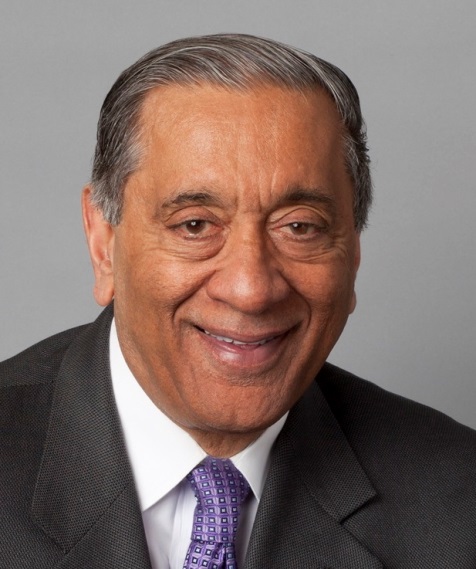DESIBUZZCanada
Events Listings
Dummy Post

International Day Of Yoga To Be Virtually Celebrated Saturday At 4pm

CANCELLED: Coronavirus Fears Kills Surrey’s Vaisakhi Day Parade

ADVERTISE WITH US: DESIBUZZCanada Is The Most Read South Asian Publication Online

SURREY LIBRARIES: Get Technology Help At Surrey Libraries

WALLY OPPAL: Surrey Police Transition Update On Feb. 26

GONE ARE THE DAYS - Feature Documentary Trailer

Technology Help At Surrey Libraries

Birding Walks

Plea Poetry/short Story : Youth Contest

International Folk Dancing Drop-in Sessions
Was Kohinoor Stolen By The British Or Was It A Gift From The Heirs Of Maharaja Ranjit Singh?
- April 29, 2016



The heirs of Maharaja Ranjit Singh were forced to surrender and the diamond was forcibly taken from them. Maharaja Dalip Singh was the nominal Head of the state. He was only 11 years old. He was falsely charged with inciting the rebellion against the British during the Second Anglo- Sikh War, and his kingdom and all of his property was taken away from him, including the Kohinoor. The Treaty of 1849 itself is illegal because it is based upon false charges on a minor, Maharaja Dalip Singh, which cannot be substantiated. The reasons given by Lord Dalhousie for justifying the annexation of Punjab can also be challenged. Moreover, Lord Dalhousie, who took possession of the Kohinoor diamond to present it to the Queen, also took many precious relics for his personal possession. These are not accounted for and their acquisition is clearly illegal.

By Sawraj Singh

Some experts are saying that the famous diamond, Kohinoor, was either surrendered through Article Three of the Treaty of 1849 or gifted to the British by the heirs of Maharaja Ranjit Singh. Therefore, we cannot ask the British to give it back. However, this argument not only shows slavish mentality of these people, but also shows their complete lack of knowledge about history.
The Treaty of 1849 itself is illegal because it is based upon false charges on a minor, Maharaja Dalip Singh, which cannot be substantiated. The reasons given by Lord Dalhousie for justifying the annexation of Punjab can also be challenged. Moreover, Lord Dalhousie, who took possession of the Kohinoor diamond to present it to the Queen, also took many precious relics for his personal possession. These are not accounted for and their acquisition is clearly illegal.
The heirs of Maharaja Ranjit Singh were forced to surrender and the diamond was forcibly taken from them. Maharaja Dalip Singh was the nominal Head of the state. He was only 11 years old. He was falsely charged with inciting the rebellion against the British during the Second Anglo- Sikh War, and his kingdom and all of his property was taken away from him, including the Kohinoor.
The child Maharaja only found out that he had gifted the diamond to Queen Victoria when he asked where the diamond was which used to hang from his left elbow (dress). A few years later, when Dalip Singh had been exiled to England, a fake show was staged. He was made to present the diamond to the Queen. She already had the possession of the diamond. Therefore, it was just a pretense and an empty-staged show.
Dalip Singh’s father, Maharaja Ranjit Singh, had died and his mother, Maharani Jindan, had been forcibly separated from him. He was being raised by the guardians appointed by the British, Dr. and Lady Logan. For all practical purposes, the British Resident, Henry Lawrence, had all the powers. He was conducting the state affairs after the First Anglo- Sikh war. Even before her formal imprisonment and forcible separation from her only son, Maharani Jindan was being held as a virtual prisoner by Henry Lawrence in the Suman Burj (Tower) in the Lahore fort. Sometimes, Lawrence would not give her any food to eat or water to drink, and he even dragged her by her hair and tortured her. She wrote about all of these atrocities and insults that she was made to suffer to the Sikh Sardars and to the other Indian rulers. These letters could have been one of the causes of the rebellion by the Sikh Sardars and the Second Anglo- Sikh War. They could also be one of the reasons for Henry Lawrence to be one of the first British officers to be killed by the rebels in Lucknow during the rise against the British in 1857.

The rebellion which led to the Second Anglo- Sikh war was started by Diwan Mool Chand in Multan. A force under the command of Sher Singh was sent from Lahore to subdue the rebellion. However, after reaching Multan, Sher Singh and his force joined the rebellion and this led to the Second Anglo- Sikh war. Dalip Singh was in Lahore and Lahore remained under the control of the British during the war. The rebels did not come to Lahore. Therefore, Dalip Singh never had any contact with them. Moreover, the way Dalip Singh was being raised; he could not incite, participate or support a rebellion against the British. He was constantly given the feelings that British culture and religion (Christianity) were superior to his own culture and religion (Sikhism). No wonder, he decided to change his religion and become a Christian. The British are guilty of forcible and illegal conversion of a minor. A few years later, when he was allowed to meet his mother, Maharani Jindan, in Calcutta, he apologized to her and promised to come back to his religion. He kept his promise and took Amrit from his cousin Thakur Singh Sandhawalia, and came back to the fold of Sikhism.
Dalip Singh wrote letters to Queen Victoria and explained to her how he was cheated out of his kingdom and his property by the British. He also exposed their hollow claims of being a just and law-abiding society. He established contacts with the Irish revolutionaries and the French revolutionaries. Through the French, he was able to develop contacts with the Russian government. Russia agreed to help him against the British—provided he can get help from the Punjabis and the Indians back home. Dalip Singh made it clear that he did not want to liberate Punjab alone, but wanted to liberate all of India from the British. He wrote letters to the Punjabis asking for their help. However, the Sikh Sardars had become complete lackeys of the British and they badly snubbed him. Dalip Singh was completely heart-broken and died in utter poverty and desolation.


The sad story of the atrocities and violation of his basic human rights did not end with his life. Even after his death, the British continued these. Instead of being cremated as a Sikh, he was, and still is, buried as a Christian. Maharani Jindan longed for Punjab all her life, but was not allowed to go back to Punjab. Just before her death, she asked Dalip Singh to please take her remains to Punjab and cremate those there. Maharaja Dalip Singh took her remains to India but was not allowed to take those to Punjab. He cremated her in Nasik (near Mumbai) and immersed the ashes in the river Godawari.
A big problem that is being faced by Punjabis and Indians alike is that we are afraid to challenge the British due to our slavish mentality and have a vague and opportunistic recollection of history. Whereas the Canadian Government has apologized for the Koma Gata Maru incident, the British have not apologized for any incidents, particularly the Jallianwala Bagh massacre. Compare this to Kenya: the Kenyan people collectively fought legal battles against the British Empire for the torture and abuse that they suffered in detention camps in the 1950s, during the Mau Mau Rebellion. In 2014, the British Government officially apologized and paid reparations to the victims. The Indian understanding of history can be seen by this: the recently released film, The Jungle Book, has gone on to become the highest-grossing Hollywood film of all time in India and has become the highest-grossing film of 2016 in India. The film is based upon the stories of Rudyard Kipling. It is either that Indians really don’t know or have conveniently forgotten who Rudyard Kipling was. Kipling was an admirer of Reginald E.H. Dyer, the man responsible for the Jallianwala Bagh Massacre; and after the massacre, Kipling claimed that Dyer was “the man who saved India.”
Not only the Kohinoor should be returned, but the remains of Dalip Singh should be returned to Punjab and be properly cremated. This will help to undo some injustice done to Dalip Singh. This will also be at least a partial solace to Maharani Jindan, because a part of her will be brought to Punjab in the form of the remains of her son, to whom she gave birth.
Dr. Sawraj Singh, MD F.I.C.S. is the Chairman of the Washington State Network for Human Rights and Chairman of the Central Washington Coalition for Social Justice. He can be reached at sawrajsingh@hotmail.com.
















